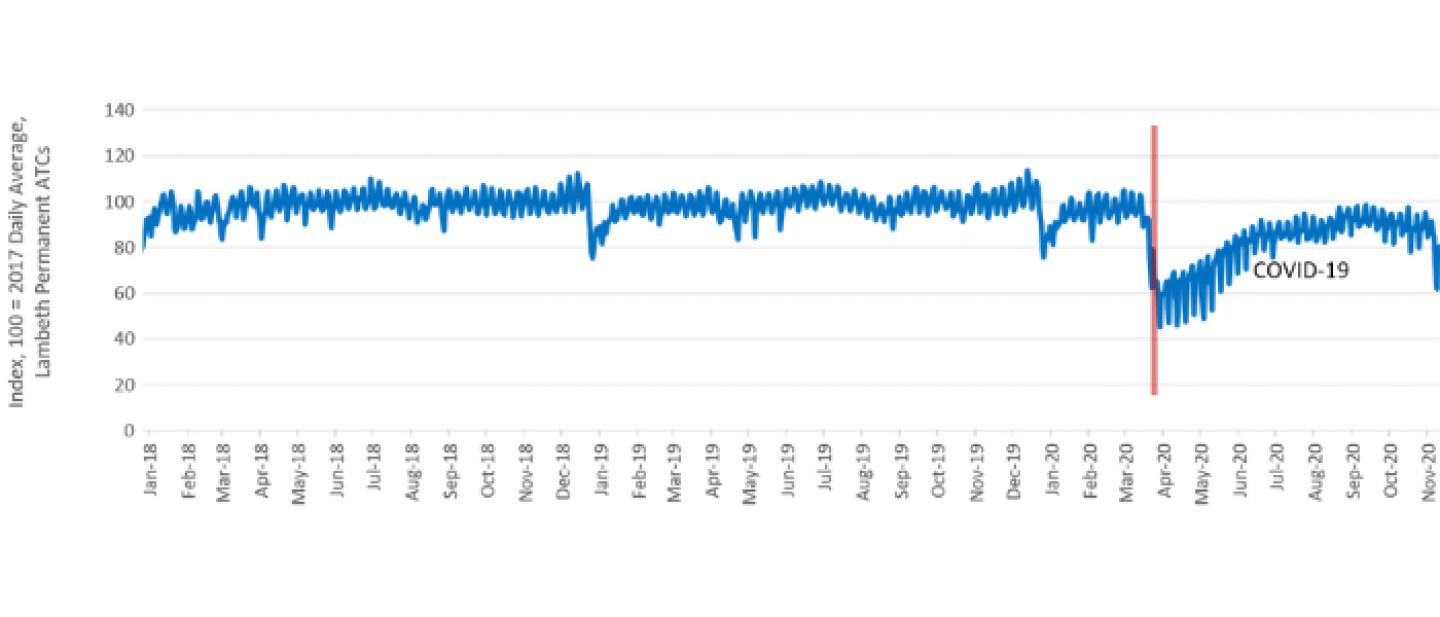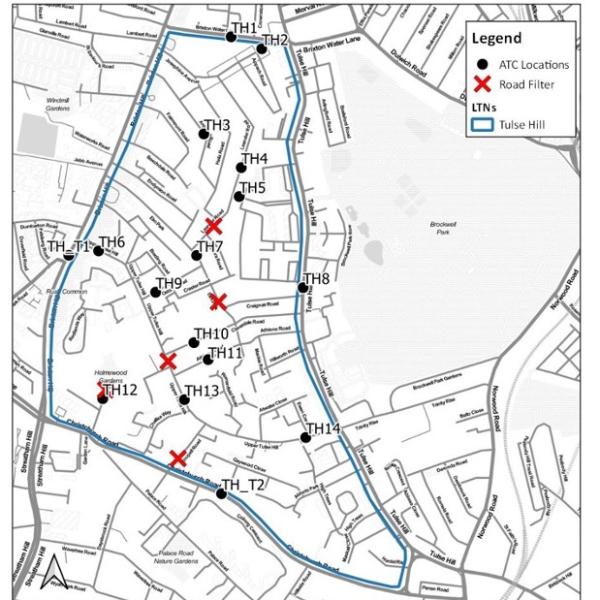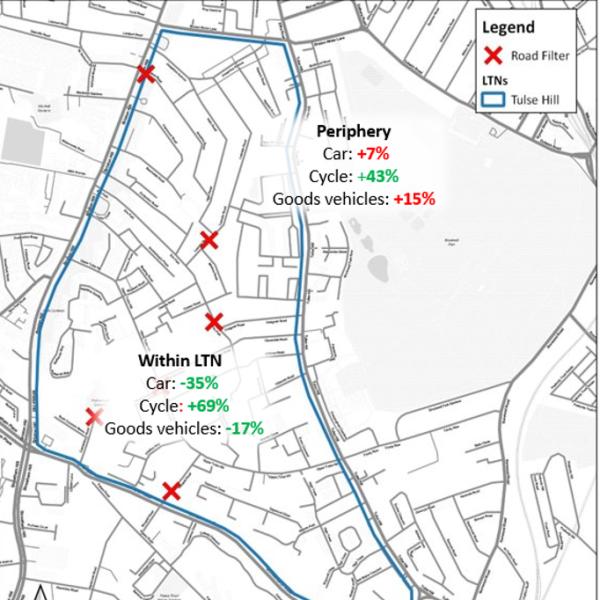Independent traffic analysis data
Baseline
- As there have been changes in traffic flows on Lambeth’s roads between when historic data was collected and this monitoring programme (most significantly due to Covid-19, but also resulting from seasonal shifts in travel patterns – as can be seen in the chart below), a direct comparison between historical and current data to understand the impact of the LTN would be inaccurate.
- To factor in these differences, a baseline flow has been calculated for each ATC based on the difference between current background data and historic background data, both of which come from TfL-owned ATCs which have collected continuous data since at least January 2017. A worked example is provided in the Independent Monitoring Study and appendices.
Image

Graph: Transport for London continuous traffic monitoring showing the average volume of traffic recorded at all ATC sites across the borough from January 2018 to November 2020. Download an image of the full chart with data back to 2017.
Tulse Hill LTN ATC Sites
- For the Tulse Hill LTN, a total of 14 ATCs were installed from 29 October to 4 November 2020, with all data collected before the start of the second nationwide lockdown. These sites can be seen in the map below.
- Of these, 11 were inside the boundary of the LTN, with the remaining 4 on key peripheral roads to pick up any spillover effects from the LTN – 2 peripheral roads used data collected by TfL permanent ATCs.
- For Tulse Hill LTN, 2 sites use Healthy Routes as a baseline, 7 sites use the 20mph study and 5 sites utilise both The Floow data and Healthy Routes. 2 sites relied on TfL permanent ATC data and therefore only present flows for cars.
Image

A map showing ATC sites in Tulse Hill LTN
Trends
General trends
- Within the LTN, the following overall percentage changes in counts were observed against the baseline:
- car: -35%
- cycle: +69%
- goods vehicle: -17%
- On the periphery of the LTN, the following overall percentage changes in counts were observed against the baseline:
- car: +7%
- cycle: +43%
- goods vehicle: +15%
- Across both internal and peripheral roads, the following overall percentage changes in counts were as follows:
- car: -14%
- cycle: +59%
- goods Vehicle: -1%
Image

Results of stage 1 traffic monitoring indicated on a map. Within the LTN motor traffic is down and on the periphery of the LTN motor traffic has seen a small increase
Specific trends
- Inside the LTN, there was a decrease in all types of motor vehicles, including cars and goods vehicles, when compared with the baseline, especially at the intersection between the east-west and north-south routes. However, Josephine Avenue has seen an increase in flows, being the main access point to the northern sub-cell on the LTN.
- The increase of motor vehicles on peripheral roads has been limited.
- Inside the LTN, there was a significant increase on the number of cycles counted, however starting from a very low predicted baseline. A moderate increase was recorded on peripheral roads.
